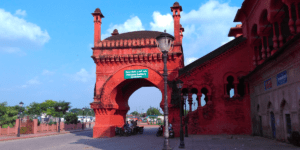The Fascinating History of Lucknow: From Nawabs to British Raj
Lucknow is a city that is steeped in history, with a rich cultural heritage that has been shaped by a range of influences over the centuries. From the rise of the Nawabs to the impact of the British Raj, the story of Lucknow is a fascinating one that has captivated visitors from around the world.
The Early Years
The history of Lucknow dates back to ancient times, with evidence of human settlements in the region dating back to the 3rd century BC. The city was a prominent center of the Indus Valley Civilization and later, the Vedic period.
However, it was during the reign of the Mughals that Lucknow truly began to flourish. The city was established by Nawab Asaf-ud-Daula in 1775 and quickly grew to become a thriving cultural and political center. The Nawabs were known for their patronage of the arts, and under their rule, the city became a hub for poets, musicians, and artists.

The Rise of the Nawabs
The Nawabs of Awadh were among the most prominent rulers of Lucknow, and their reign is often considered the golden age of the city. They were known for their love of luxury, with a fondness for fine arts, music, dance, and lavish feasts.
The city’s architecture and design also flourished under their rule, with a range of stunning buildings and landmarks being constructed.
The most iconic of these landmarks is the Bara Imambara, a grand complex that was built in the 18th century. It is home to several impressive structures, including the grand mosque and the Bhulbhulaiya, a maze of tunnels and passageways that is both fascinating and a bit spooky.
The Chota Imambara is another impressive landmark in Lucknow and one that is not to be missed. This stunning complex is home to several beautiful structures, including the stunning mosque and the impressive chandeliers. The architecture and intricate design of the Chota Imambara are sure to leave visitors in awe.
The Arrival of the British
In the early 19th century, Lucknow became a key center of the British Raj. The East India Company had established a presence in the city and soon began to exert greater control over the region. The Nawabs continued to rule, but their power was increasingly curtailed by the British.

The British influence can be seen in many of the city’s landmarks, including the Residency. This sprawling complex was once the residence of the British Resident General and is now a protected monument that offers visitors a glimpse into Lucknow’s colonial past. The Residency is also known for its beautiful gardens and stunning architecture.
The British influence can also be seen in the city’s cuisine, with dishes like mulligatawny soup and kedgeree being introduced to the local cuisine. The British also helped to establish several schools and universities in the city, which helped to promote education and learning.
The Modern Era
Following India’s independence in 1947, Lucknow became the capital of the state of Uttar Pradesh. The city continued to grow and develop, with a range of new industries and businesses being established. Today, Lucknow is a vibrant and bustling city that is known for its rich culture, delicious food, and stunning landmarks.
In conclusion, the history of Lucknow is a fascinating one that has been shaped by a range of influences over the centuries. From the rise of the Nawabs to the impact of the British Raj, the city’s story is one of cultural, political, and economic growth.
Visitors to Lucknow can explore the city’s stunning landmarks and monuments, sample its delicious cuisine, and learn about its rich cultural heritage.







